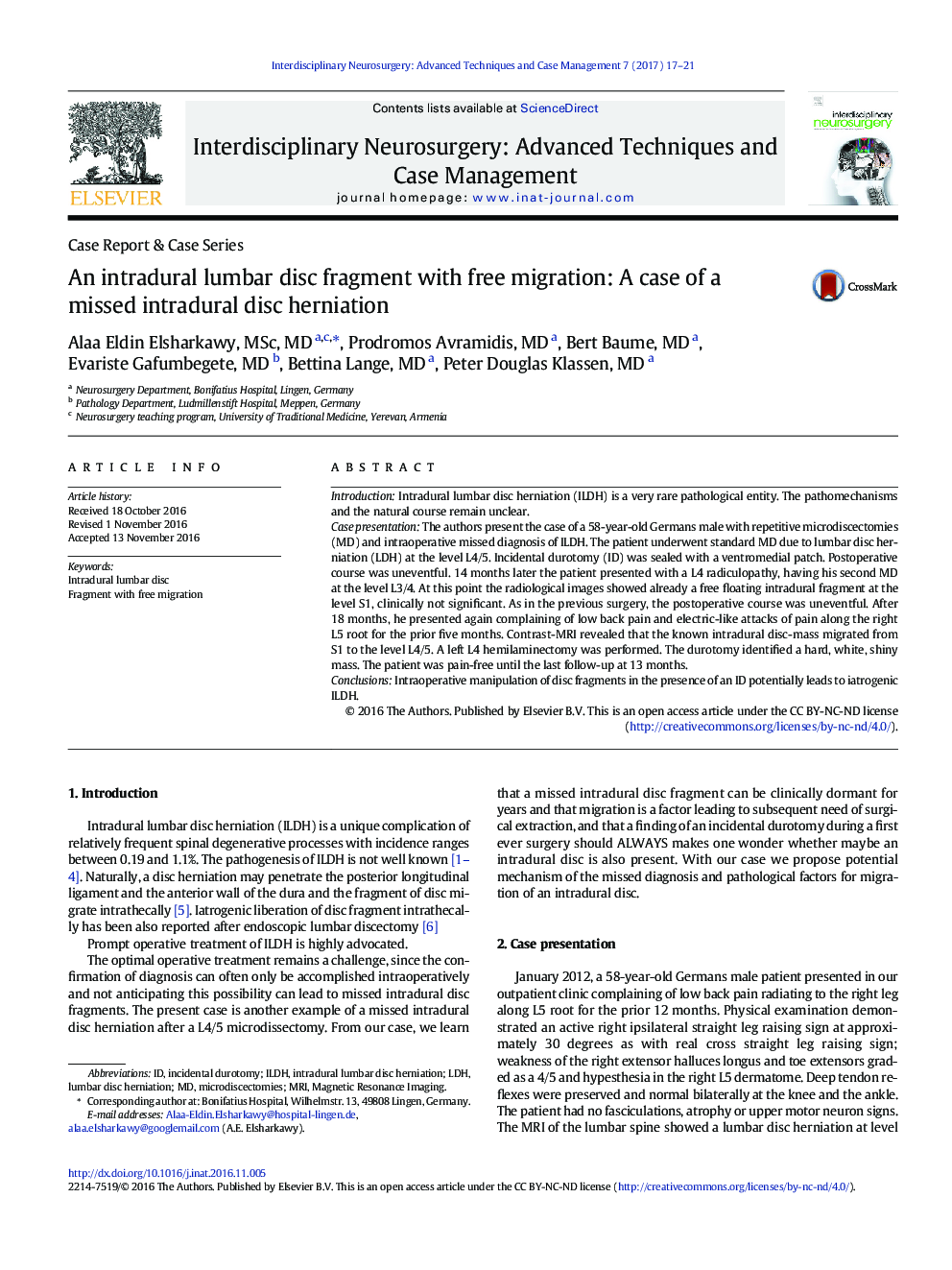| Article ID | Journal | Published Year | Pages | File Type |
|---|---|---|---|---|
| 5629480 | Interdisciplinary Neurosurgery | 2017 | 5 Pages |
â¢Intradural lumbar disc herniation (ILDH) is a unique complication of relatively frequent spinal degenerative processes.â¢The confirmation of ILDH diagnosis can often only be accomplished intraoperatively.â¢A missed intradural disc fragment can be clinically dormant for years.â¢Migration is a factor leading to subsequent need of surgical extraction.â¢We propose potential mechanism of the missed diagnosis and pathological factors for migration of an intradural disc.
IntroductionIntradural lumbar disc herniation (ILDH) is a very rare pathological entity. The pathomechanisms and the natural course remain unclear.Case presentationThe authors present the case of a 58-year-old Germans male with repetitive microdiscectomies (MD) and intraoperative missed diagnosis of ILDH. The patient underwent standard MD due to lumbar disc herniation (LDH) at the level L4/5. Incidental durotomy (ID) was sealed with a ventromedial patch. Postoperative course was uneventful. 14Â months later the patient presented with a L4 radiculopathy, having his second MD at the level L3/4. At this point the radiological images showed already a free floating intradural fragment at the level S1, clinically not significant. As in the previous surgery, the postoperative course was uneventful. After 18Â months, he presented again complaining of low back pain and electric-like attacks of pain along the right L5 root for the prior five months. Contrast-MRI revealed that the known intradural disc-mass migrated from S1 to the level L4/5. A left L4 hemilaminectomy was performed. The durotomy identified a hard, white, shiny mass. The patient was pain-free until the last follow-up at 13Â months.ConclusionsIntraoperative manipulation of disc fragments in the presence of an ID potentially leads to iatrogenic ILDH.
